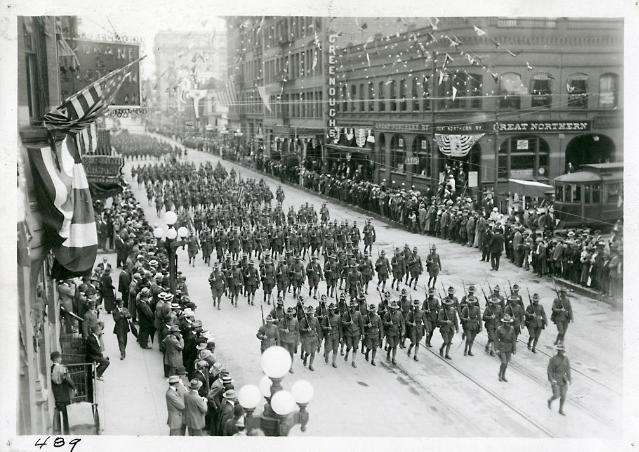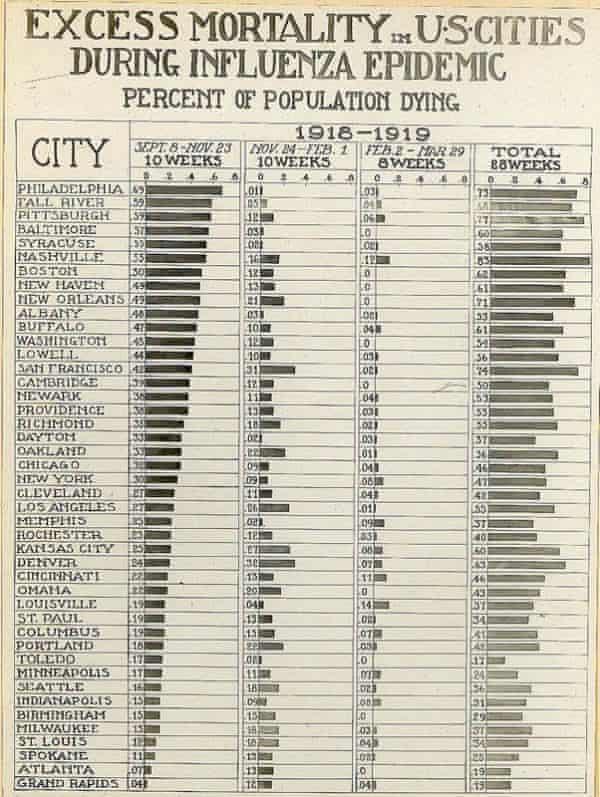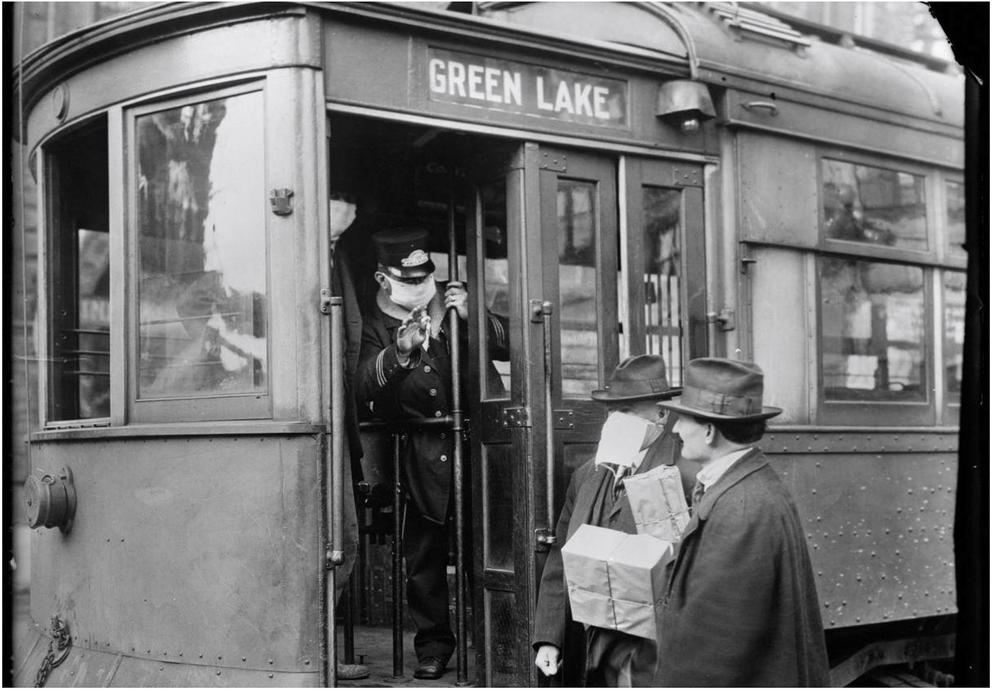I have been impacted personally. Close family members have been infected, some recovered, at least one dealing with serious long-haul issues. People I’ve known have died from it. Family, work and daily life have been disrupted. But I have been luckier than many.
I hear from people who want a positive message about where we are and where we’re going. I’ve written and talked about resilience, how Seattle has met and struggled through challenges in the past. I am optimistic by nature, but also cautious and conservative. I know we’ll come through it. I know we’ll rebuild. But is COVID over?
A year ago, I began digging into the Northwest’s history with the last great pandemic. In a series of stories, I sought to shed light on how we fared during the so-called Spanish flu pandemic that swept through the Northwest starting in the fall of 1918.
One of the first articles I wrote warned against “premature optimism.” After six weeks in lockdown, from early October to mid-November 1918, Seattle opened up, thinking we had licked the flu just as we had beaten the Germans in World War I. After the Armistice in November 1918, people paraded, celebrated, dove into renewed holiday socializing and took off their masks. Predictably, the flu crept back and killed many in a deadly wave.
Just as now, there was controversy over wearing masks and over school closures. There was pushback against the government’s authority to make or enforce public health rules. Conflicting advice from the medical community didn’t help. Quack cures were pushed. In 1919, anti-vaccination activists protested and defied inoculation advice and quarantine in the middle of the pandemic and a simultaneous outbreak of smallpox in Seattle public schools!
There was intense political pressure to return to normalcy as quickly as possible. Seeing so much of the same now is not reassuring. Although we seem to finally be on a more positive course in dealing with COVID, my confidence in the public has been undermined by more than 530,000 dead and states like Texas and Mississippi that are opening up, but where the virus is far from contained. Given that new variants of COVID have emerged and may still emerge — as even the Spanish influenza mutated in 1918 — the importance of continued vigilance and mask wearing is crucially important.
Other unsettling things I keep in mind: The name and dates we’ve given to the earlier pandemic are wrong. It is routinely referred to as the Spanish influenza pandemic and said to have raged from 1918 to 1919. Well, the Spanish flu wasn't Spanish — its origin was more plausibly in rural Kansas — and the oft-cited date gives a false sense of its duration. In fact, early signs arguably appeared in 1917 and the flu continued to flare up in places as late as 1922 before it “sputtered out.” Newspaper accounts suggest it was still rearing its head in Seattle as late as the winter of 1921. In other words, instead of a one-year or two-year misery, its arc covered four to five years, long after flu deaths had peaked. The global death estimate is at least 50 million, and possibly as high as 100 million.
In addition, many of the influenza’s impacts were long-term. The social impact was great. Some 700,000 deaths in the U.S., and many scores of broken families. In New York City alone it is estimated that, by the end of 1918, 31,000 children had lost one or both parents to the pandemic. Communities of color and Indigenous communities were hit particularly hard — entire villages in Alaska virtually disappeared, and some islands in the South Pacific, like Samoa, were devastated.
A 2010 study of the cohort of prenatal children in utero during the worst of 1918 indicates there were even impacts on the future of the unborn. They “had lifetime deficits in economic productivity and in education, as well as excess work disability, which suggests developmental impairments or lifetime health issues.”
The 1918 flu also impacted the mental health of many patients, who frequently exhibited neurological symptoms or irrational behavior. People seeking treatment for mental health issues rose; depression was commonly cited. There are many stories of flu victims who changed, who were “not themselves” after infection. Suicide rates in the U.S. rose from 1919 to 1922, and many of those deaths were popularly attributed to people who contracted the disease or who lost family members.
Today, we are beginning to understand that some who contracted COVID are long-haulers — infected folks who are dealing with symptoms and recovery months or even a year after their initial infection. There is a long-hauler in my immediate family, and when I see people taking the coronavirus lightly, I feel anger. If they saw what I see in the suffering that occurs outside of the data on transmission rates, new cases and body counts, they might be more careful, less quick to resume “normalcy” until it’s much safer.
And normal, whatever that is, might be a long way off. Consider that the decade after the 1918-1922 pandemic saw the reemergence of the Ku Klux Klan, social upheaval, Jazz Age excess, the rise of fascism and financial recklessness that helped lead to the Great Depression.
The post-COVID era, if there is such an era, will be a huge test. The history of pandemics and epidemics shows they rarely end with a bright, sharp before and after. Yes, we’re resilient, and there is opportunity for reinvention and righting old wrongs. I believe there will be positive progress in ways we can’t now predict.
But there are significant uncertainties. Going forward, as we race toward a possibly jagged finish line, we should remember who in the past year sacrificed for us and who obstructed us. The premature optimists, vaccine deniers, mask burners, conspiracy cultists and reckless risk-takers who jeopardized others’ health for their own convenience were with us a century ago, too. We overcame the obstacles they threw up, but they are part of our country’s own long-haul problem. Our only option is to find recovery in spite of them.






